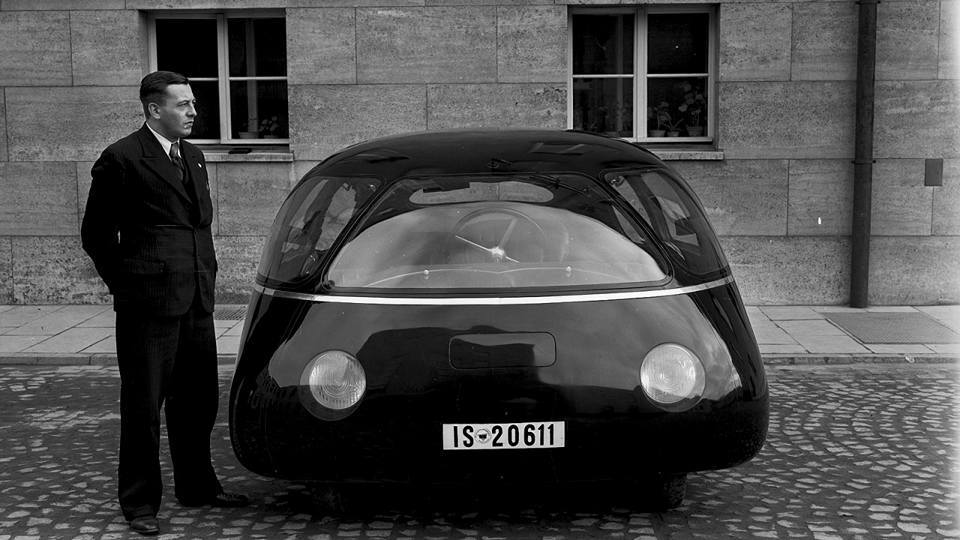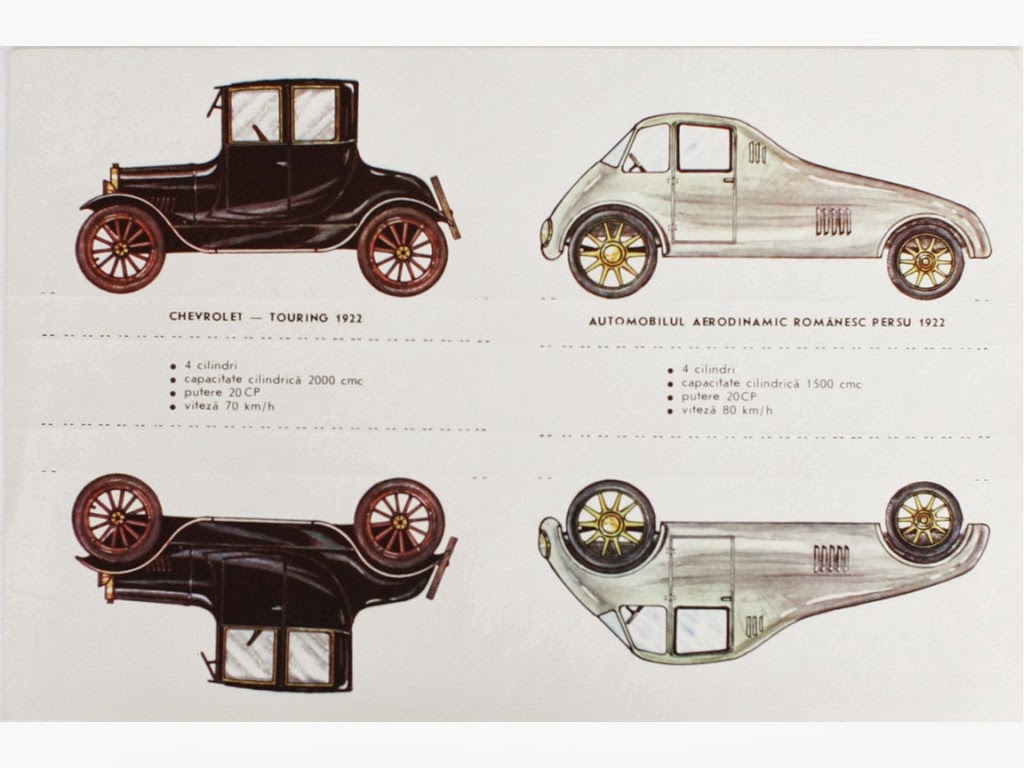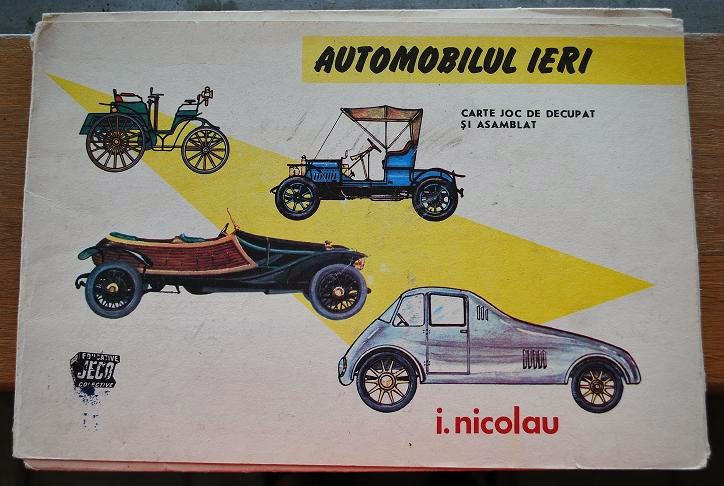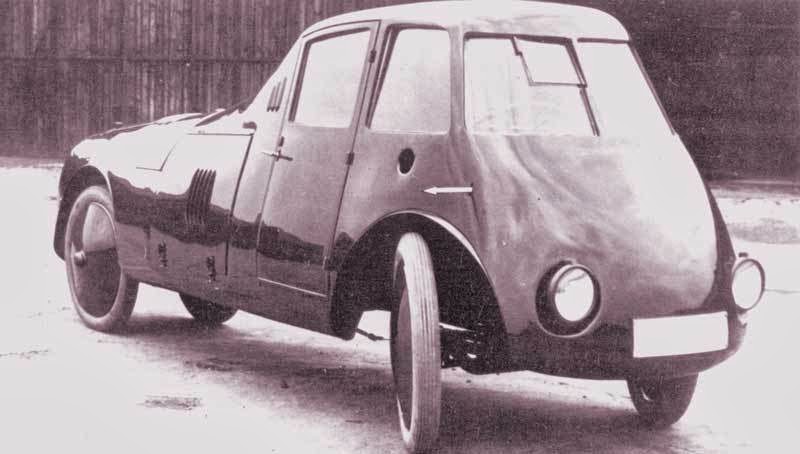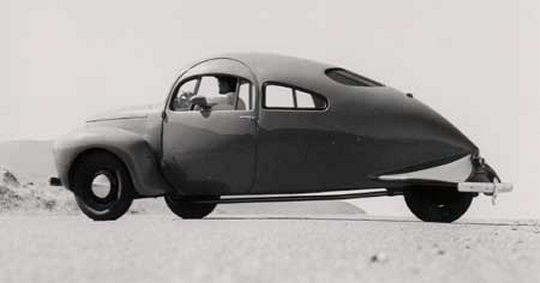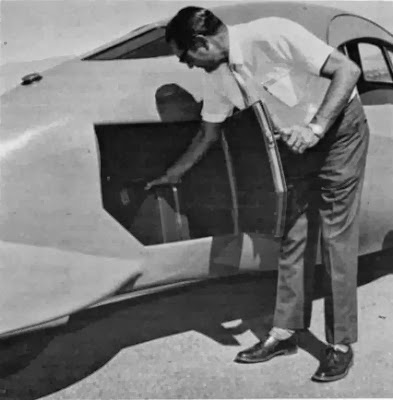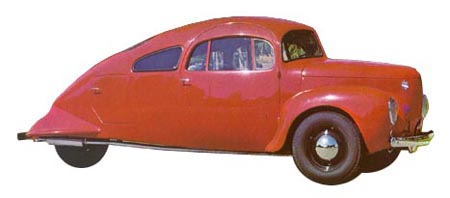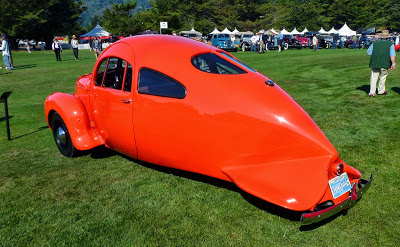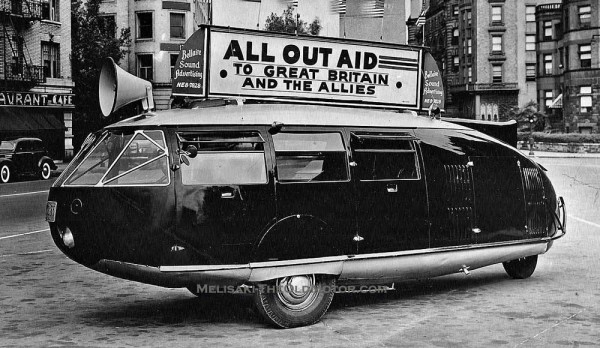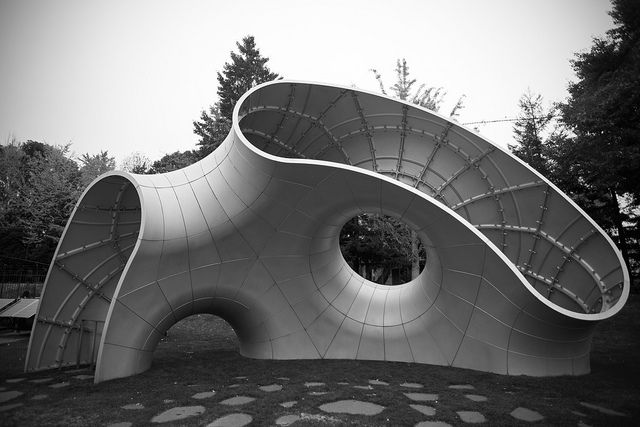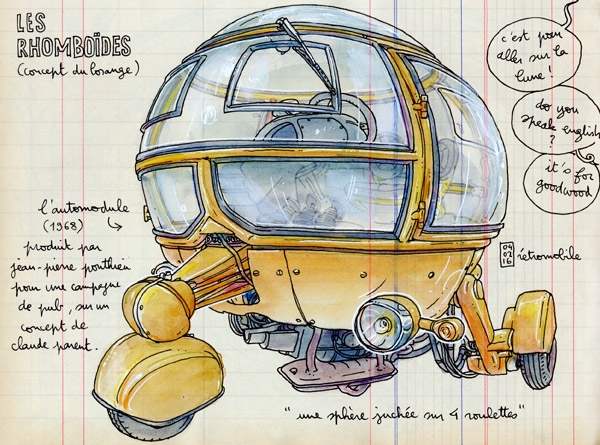Bubble – Schlörwagen “Pillbug” 1939 (Berlin) Germany
Fundamentally, ” the Schlörwagen is a wing on the wheels.”
Schlörwagen, or just the “Pillbug”, built in 1936

The researchers solve mystery ” the wing on the wheels.”
the Schlörwagen (surnamed “Egg” or “Pillbug”), presented to the public at the Auto Show in Berlin 1939, is an aerodynamic Cd of the prototype 0,113 wind tunnel developed by Karl Schlör, Engineer at Krauss-Maffei, around a chassis Mercedes-Benz 170H rear engine and an aluminum shell of the body Ludewig.
To demonstrate how the aerodynamic envelope was pushed into this golden decade of rationalization, this 1939 Schlörwagen prototype was tested originally on CD 0,186, and a model of it was retested by VW in seventy years with a Cd .15.
Each of these values to the “pillbug” at or near the top of the list of the most aerodynamic concept cars ever built, as the probe V Ford 1985, with a Cd .137. Built on the chassis of the rear engine Mercedes 170H, it was significantly faster, as well as 20% at 40% more fuel efficient than its donor car.


The 1939 Schlörwagen was built and tested on the roads around Göttingen, Low – Saxe, Germany .
The parallel development of the automobile and the airplane in the early 20th century, it was inevitable that some cross-pollination would be. from 1921, the pioneer of German aviation Edmund Rumpler applied the principles of the nascent science of aerodynamics to its “Tropfenwagen”. Its unusual design significantly better than the classic cars of the day in this area and got the remarkable Cd (drag coefficient) from 0,28, a brand that is not tied to a production car for many decades.

the Schlörwagen (surnamed “Egg” or “Pillbug”), presented to the public at the Auto Show in Berlin 1939, is an aerodynamic Cd of the prototype 0,113 wind tunnel developed by Karl Schlör, Engineer at Krauss-Maffei, around a chassis Mercedes-Benz 170H rear engine and an aluminum shell of the body Ludewig.
The Russians took the Schlörwagen as war booty and testing as a vehicle driven propeller. It is a condition of aerodynamic efficiency in the league with the most aerodynamic cars being considered today as Aptera.
It is important to note that the rise of interest in aerodynamics in years 1930, was born from the desire to reinvent the automobile of his horses and wagons origins and assumptions that the average driving speeds are on the rise with modern roads.
This is a prospective company, like most drivers have been plodding along at 35-45 mph outside towns.
But the first motorways were built in Germany, and improving US roads, including raw walks and highways were held. It also explains the particularly strong interest and adoption of rationalization in Germany.
there is 75 years, to flow to researchers at the Research Institute of Aerodynamics in Göttingen (AVA), a car that has long been considered the consistent implementation of aerodynamic shapes: the so-called Schlörwagen. For the whereabouts of vehicles many myths. Some puzzles can be solved successor to AVA in the archives of the German Aerospace Centre (DLR).
The Schlörwagen was an experimental car that caused a sensation in 1939. Son Windschlüpfigkeit, measured as a drag coefficient (Cd value) that we call, was sensational with low 0,186. Revaluation of VW in seventy years on a model confirmed that Schlörwagen even a Cd of just 0,15. The range of cars today with a drag coefficient of 0,24 at 0,3 not correspond to the favorable aerodynamic shape Schlör car. Only modern experimental cars like the so-called car 1 liter VW or PAC-Car II ETH Zurich have lower values Cw. Contrary thereto, however, the Schlörwagen offered seven – an entire family – l & rsquo; space.
To mark the anniversary Göttingen DLR researchers presented both a model’ origin resulting scale in the wind tunnel. Records confirmed the investigation in the years 30: The flow clings to the model. There will be no stalls or turbulence that would slow a vehicle. Like almost ideal proved to be the long drawn back: Here no discharge of’ air which provides most of the cars to increase the aerodynamic drag showed.
The Schlörwagen should the German engineer Karl Schlör (1910-1997) his name. The car should not reach high speeds mainly, but the conventional driving speed have a particularly low power consumption and provide a place for family – anmutet a concept that most modern in the time of climate change and the energy crisis.
Schlör opted for the basic shape of the car two sections of aircraft wings with a particularly low drag out. The shape of the vehicle was like half a drop, which probably later dubbed “Göttingen egg” won. “The Schlörwagen is essentially a wing on wheels ", says Professor Andreas Dillmann, Director of the DLR Institute of Aerodynamics and Flow technology.
To interfere with the aerodynamic shape as little as possible, the body was pulled out so far that the front wheels can rotate inside the body. This resulted in a large width of the vehicle, from 2.10 meters. With this width, designers have a resistance to the air a little higher into account. The floor of the vehicle has been closed, the window closed flush with the outer skin. Despite an aluminum body of the car was about 250 kg more than the standard model, Mercedes 170 H.Jusqu'à 40 percent more economical
In the newly completed highway time to Göttingen, the precursor of today is a 7, the Schlörwagen obtained in 1939 a series of tests. The maximum carriage speed rail circa 105 km / h, considerable streamlined car 134 at 136. The Schlörwagen consumed eight liters 100 kilometers, the production model, but ten to twelve liters – reduced 20 at 40 percent.
For all its aerodynamic advantages Schlörwagen never went into mass production. And not without reason: “The excellent aerodynamics at the expense of driving safety ", Dillmann says. The Schlörwagen was not only very difficult to drive, stronger side winds had swept the vehicle off the road. Problems related to driving safety would get nowadays by electronic functions of driver assistance maybe in the handle. Test drive with Russian propeller prey
After driving tests in Göttingen, the Schlörwagen 1939 the International Motor Show (IAA) Berlin presented an astonished public. But World War II has canceled plans for the further development of passenger cars. 1942 Schlörwagen was equipped with a propeller of the Russian war booty with 130 ch. The unusual construction excited about a test in Göttingen stir.
At the end of the war, he disappeared from the public scene. Over the years, Various theories have emerged about his whereabouts. Some said he had been confiscated by the Allies and brought to England. Others have speculated that burned in Riga or maybe today is forgotten in a warehouse in Göttingen. All these ideas are, according to the director of the Central Archives of the DLR, le Dr. Jessika Wichner, bad “. The Schlörwagen was still detectable at least until the end of August 1948 the AVA Göttingen” The inventor Schlör had time to know by letter that his car “get the body in a damaged condition, even fortune” was. Interiors such as seats and wheels had been removed to war, the car “station” in a building abbruchreifem. Wichner: “. The vehicle was then not roadworthy, or even a complete car” hope Schlör, at least for the remains returned, were dashed in 1948: A tow truck had to return empty-handed from Göttingen, British military administration gave no release. Thereafter, the vehicle loses track. “Sadly, the likelihood that you eventually disposed of the heavily damaged body pure and simple, is very high,” suspect Wichner.
A manufactured according to the original drawings of the archive DLR replica Schlör car to’ ladder 1: 5
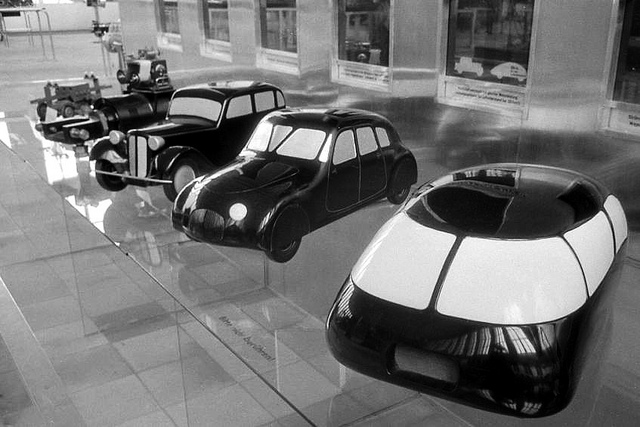
There are sixty-five, the flow of researchers at the Research Institute of Aerodynamics (Aerodynamic Research Institute; AVA) Göttingen unveiled a car that, for many years, was considered the performance par excellence of the aerodynamic design in vehicle construction; his name was Schlörwagen. Many myths have arisen about what became of the vehicle.
Now , the archives of the German Aerospace Center (German Aerospace Center- and space, DLR) –
The successor to AVA – have helped shed light on some of the mysteries.
The DLR Institute of theft’ orientation with international partners to conduct research on the concept of a new center of operations jointly operated airport (APOC). Such a control center has the potential for airports and all participants to respond much better to disturbances future flight operations.

The Schlörwagen was near 7 feet wide, mainly due to its body panel covering the front wheels.

DLR The car was designed by German engineer Karl Schlör, who worked at the Research Institute of Aerodynamics (Aerodynamic Testing ou AVA) Riga occupied by Allemands.DLR In 1942, engineers a Russian aircraft engine 130 horses and bolted to the back of the car for some essais.DLR The Schlörwagen, like other aerodynamically designed cars of the era, took the form of an airplane wing or teardrop.DLR
What makes it so fuel efficient Prius? The hybrid powertrain is a big part of it – us, Yes, but put it in a box on wheels like the Mercedes-Benz G-Wagen or even a Kia Soul and it is not nearly as helpful. The Prius can deliver 51 largely because mpg Toyota engineers worked tirelessly on their computers and in the wind tunnel to ensure it cuts through the air as easily as possible.
However, relative to the Schlörwagen, German experimental vehicle from 1939, Prius is a brick. The hybrid has a drag coefficient (a measure of the effectiveness, it moves through the air) from 0,25, This places before the Nissan Leaf and Chevrolet Volt, but behind the Tesla Model S Diesel and Mercedes-Benz CLA. The Schlörwagen crushes all, pointing to an incredible 0,15. He also sat September, was once a Russian aircraft engine attached to it, and may have been stolen by the British after World War II.
Despite the lack of wind tunnel tests in general and computer modeling, years 1920 and 1930 was a booming time for’ aerodynamic. The Czech Tatra 77, Chrysler Airflow, and Mercedes-Benz 540K Streamliner were impressive attempts for drag. These cars “consistent with the still relatively primitive understanding of’ aerodynamic (or rationalization) of the day, which is close to a car as close to a drop’ water as possible " , dit Sam Livingstone, Director of Design Research Car and a judge for the World Car Award. They had the’ looks a little unusual , but not crazy, and they went into production, with different levels of success.
The Schlörwagen was something else. German engineer Karl Schlör, au Aerodynamic Research Institute (Aerodynamics Institute) en Göttingeng, started with a 38 horses Mercedes 170H. Inspired by the shape of airplane wings, he redesigned the exterior, setting windows flush with the hull to the cleaner air flow and expansion of the body on the front wheels. “Fundamentally, the Schlörwagen is a wing on wheels ", says Andreas Dillmann, Director of the Institute of Aerodynamics and Flow Technology at the German Aerospace Centre (DLR), le successeur du Aerodynamic Research Institute.
The result, unveiled at the International Motor Show 1939 in Berlin, was dubbed the "Göttingen Egg.” It was nearly seven feet wide (only inches narrower than a first generation Hummer) and had three rows of seats for seven years.
The changes worked: The 170H has stalled at around 65 mph. the Schlörwagen, using the same motor, hit 84. And it was only eight liters of fuel to cover 62 miles, improved 20 at 35 percent. The coefficient of drag 0,15 Only beaten by modern designs of less practical cars like General Motors EV1 and Volkswagen XL1 .
The only example of Schlörwagen was kept in a dilapidated building near Göttingen, where the seats and the wheels have been removed during the war. The British military administration finally towed somewhere, and he has not been seen since. One theory says that the car was sent to England, mais Jessika Wichner, chef du Central Archive DLR, this “it is extremely likely that the body was badly damaged simply abandoned.”
To mark the 75th anniversary of the creation of the car, Dillmann team built a model 1: 5 scale based on the original drawings, and put it in a wind tunnel to see how it performed. They found that the air clung firmly to the vehicle, without causing stalls or turmoil could slow.



This slippery love toy of a car, that represents the pinnacle of German experience in aerodynamics, was designed around 1936. its designers, working off the North German city of Gottingen were Karl Schlör engineer and Krauss-Maffei. The large-scale car was built on the chassis of the rear-engine Mercedes-Benz 170H, and he scored a low never before seen in Cd drag coefficient: 0,113.
Perhaps inevitably known as "egg", it was presented to the Auto Show in Berlin the fateful year 1939. Rumor has it that after commissioning mothballs during the war until the car has been "liberated" by a team of British soldiers in the British sector of Belin. We can not be sure of anything else, except that it was an incredible feat of aerodynamic style. Herr Schlör died 1997, and perhaps the secret of
wherabouts egg forever.
Aurel Persu (1890-1977) was a Romanian engineer and designer of the car pioneer, the first to put the wheels in’ Inside the body of the car as part of his attempt to reach the perfect shape for aerodynamic cars . He came to the conclusion that perfectly aerodynamic car should have the form of falling water drops .
patented aerodynamic design.
Persu, specialist in aerodynamics and aircraft dynamics, implemented his idea 1922-1923 in Berlin , the construction of’ a car with an incredibly low drag coefficient of 0,28 (same as a Porsche Carrera modern) or even 0,22 (still not reached by almost all modern production cars), by source. The drag coefficient was much better than the 0,8-1,0 common with the cars used at that time – leaves. This allowed fuel consumption to decrease 4-5 Once in the car of Persu.
This was the first car to have the wheels to’ within its aerodynamic line, we take for granted today. This was the main innovation compared to Persu 1921 Rumpler Tropfenwagen (“drop car”) Austrian engineer Edmund Rumpler. Given the reduced distance between the rear wheels, he abandoned the differential system for transmission of engine torque.
This meant that the car could safely negotiate the curves up 60 km / h. Design Persu received German patent number 402.683 in 1924 and US Patent 1.648.505 in 1927.


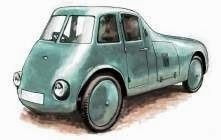

The car had an aerodynamic aluminum body, structure made of wood, Mid arrangement and light alloy wheels. Yes, all in 1923 … In some pictures , you can see the real rubber tires. I must say I l’ really like the look of the streamliner with aerodynamic- Mooneyes-Bonneville trims.
Retromobil (Romanian Association Classic Cars) was an attempt to restore , but the request was rejected by the museum’ hosts for public viewing. The Streamliner Persu based in’ Inside the Technical Museum Dimitrie Leonida in Bucharest / Romania. Unrestored, or say, -not in the great state ” original ”. It is a battle in me – although it must be restored or not … I can not really give a verdict here. Here are some pictures of Persu Streamliner weeks ago.



 Compared to today's standards, the Streamliner like a helicopter. Or as a bizarre cucumber. One thing I know for sure, Persu the Streamliner was one of the first pioneers of the automotive industry moderne.Ses studies and vision have helped shapping how supercars look aujourd'hui.Et how aerodynamics and drag coefficient dictates how our cars look, and feel and drive today.
Compared to today's standards, the Streamliner like a helicopter. Or as a bizarre cucumber. One thing I know for sure, Persu the Streamliner was one of the first pioneers of the automotive industry moderne.Ses studies and vision have helped shapping how supercars look aujourd'hui.Et how aerodynamics and drag coefficient dictates how our cars look, and feel and drive today.


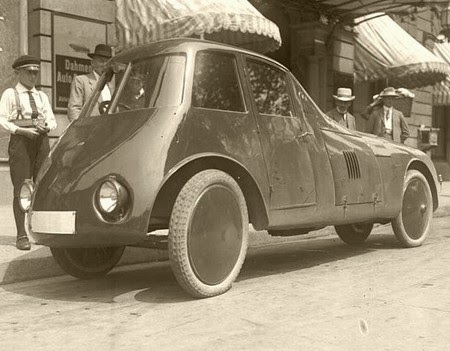
the Streamliner Persu presents its first aerodynamic automobile world !
Note the roof mounted rear vision periscope on this teardrop streamliner Riley-Head
Earlier this month – us, we referred to the teardrop streamliner craze of the mid 1930 in our post on the Dymaxion Car Buckminster Fuller . Such a car that we do not see in the various sources that we met is that design powered Riley-Ford that was apparently used to promote the general Jumbo Balloon tires this undated photograph. car details are sketchy, but it was apparently built by Libby Body Works Kansas City, Missouri as a rolling billboard for young Advertising Company using conventional Ford Model “A” Undercarriage and a conversion OHV saw Riley (us – below).

General Tire engineers have created the general low pressure Balloon Jumbos to the late 1920, revolutionizing the design and manufacture of tires. requiring only 12 air pressure books, the Balloon Jumbos promised a ride much smoother than conventional tires of the day. The downside is that 14 inch special wheels, also available from General, were necessary to mount them on the car at a cost of between 89,50 $ and 120 $ all in a set of five, depending on the vehicle, a significant amount of money at the time. The agreement also requires the vehicle owner trade in his old set of wheels and tires , thus blocking him as a repeat customer.
Whether or not teardropper never actually reaches the remarkable speed claimed on the door on 12 Jumbos books is questionable. We invite readers to comment on it or chime with more information about this car out of the ordinary.
Lewis Airomobile 1937 Since

In the years 1930, with rationalization at its height all kinds of vehicles were built. One of them was that 3 wheels built by Lewis American Airlines Inc., in 1937. Designed by owner Paul Lewis who wanted to build a cheap car for the masses with a label only 300 $ of price. His idea was a wheeler 3, Why? As its frame does not rotate at the difference of a roller 4, which means less toned and allows cheaper to build.
He contacted Carl Doman and Edward Marks, who after the closure of the Franklin Automobile Company had established independent engineering and prototypes. This prototype is based on an aerodynamic model designed by Lincoln Zephyr stylist John Tijaarda and use a cooled engine newly developed air 4 flat cylinders built by Skinner Motor Corporation, whose owner Ralf Skinner was good friends Carl and Edward.
After Debuting, he has accumulated over 45.000 miles on a tour of the States trying to win the production financing. Despite good reviews the general public, he failed to win a donor and it remains the only ever built. Personally, I'm not quite sure that dolphins tail on the back.


Richard Buckminster Fuller is an architect, designer, inventor, American writer and futurist.
Fuller has published over 30 books, inventing or popularizing terms such as "spaceship earth",
"Éphéméralisation" and "synergistic".
Born in 1895 Milton, Massachusetts, United States
Death : 1983, The Angels, California, United States

Another flop, failed , but famous of the decade was designed by noted architect and inventor Buckminster Fuller – his Dymaxion car aspired to energy efficiency and the Chamber of passengers in, carrying up to a dozen people at a time. Although aerodynamics because of its shape, it was abandoned after a serious accident during a demonstration that showed he could roll too easily due under the law (or more accurately: bad) conditions. All the same, the emphasis on efficient engineering of energy consumption to body configuration still inspire modern designers to date !
The history of the Dymaxion Car, one of his most famous and the precursor of low consumption vehicles aerodynamic works.
The last reconstruction of the Dymaxion Car # 4 business by Norman Foster specially for this exhibition in tribute to Fuller, who was his mentor and friend. “My starting point when deciding to create the Dymaxion Car # 4 was a mixture of curiosity and a desire to pay tribute to Bucky, a way to express my gratitude for his wisdom and for his valuable way of understanding things that helped shape my own life”.
Dymaxion Car Buckminster Fuller
Bonus !
https://youtu.be/Y_ZS_EfoYpA
Cars of the future 1948
Producer: Popular Mechanics; Jerry Fairbanks. This short was released in theaters on 21 May 1948 and presented “streamlined wonders on wheels.” In 1948, this was the future of the automobile. The first car shown remember the BMW Isetta years 1950 and 60. The others are just far.





